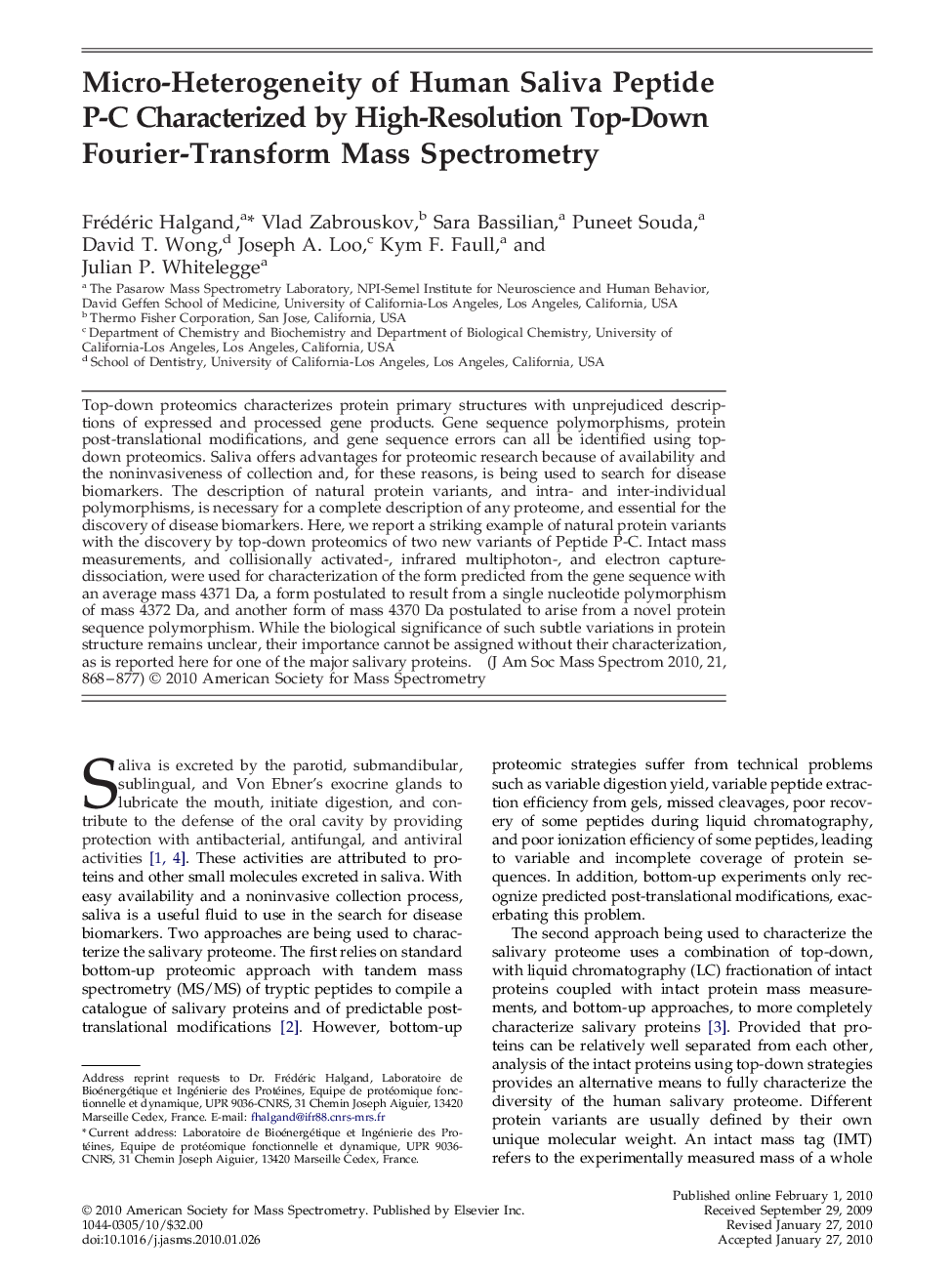| Article ID | Journal | Published Year | Pages | File Type |
|---|---|---|---|---|
| 1195148 | Journal of the American Society for Mass Spectrometry | 2010 | 10 Pages |
Top-down proteomics characterizes protein primary structures with unprejudiced descriptions of expressed and processed gene products. Gene sequence polymorphisms, protein post-translational modifications, and gene sequence errors can all be identified using top-down proteomics. Saliva offers advantages for proteomic research because of availability and the noninvasiveness of collection and, for these reasons, is being used to search for disease biomarkers. The description of natural protein variants, and intra- and inter-individual polymorphisms, is necessary for a complete description of any proteome, and essential for the discovery of disease biomarkers. Here, we report a striking example of natural protein variants with the discovery by top-down proteomics of two new variants of Peptide P-C. Intact mass measurements, and collisionally activated-, infrared multiphoton-, and electron capture-dissociation, were used for characterization of the form predicted from the gene sequence with an average mass 4371 Da, a form postulated to result from a single nucleotide polymorphism of mass 4372 Da, and another form of mass 4370 Da postulated to arise from a novel protein sequence polymorphism. While the biological significance of such subtle variations in protein structure remains unclear, their importance cannot be assigned without their characterization, as is reported here for one of the major salivary proteins.
Graphical AbstractIntact mass tag measurement and highly resolved and accurate MS and top down MS/MS allowed detection of three forms of Peptide P-C in mixture differing by 1 Da.Figure optionsDownload full-size imageDownload high-quality image (165 K)Download as PowerPoint slide
